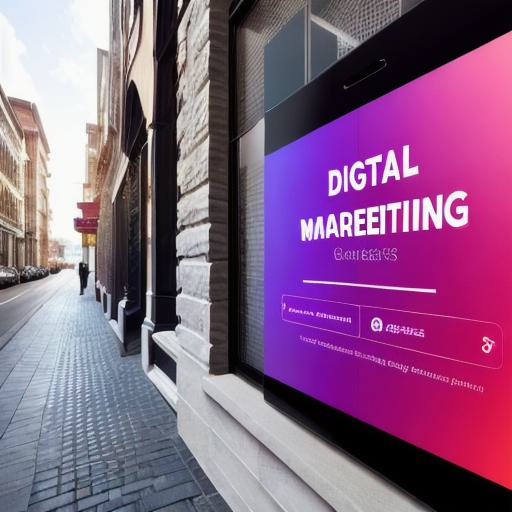Marketing is a crucial aspect of any business, regardless of its size. It’s how you reach out to your target audience, promote your products or services, and generate revenue. However, with the increasing number of marketing channels available today, small businesses may find it challenging to determine which ones are most effective for their needs.
This comprehensive guide aims to provide small business owners with a better understanding of the various marketing channels available to them, including social media marketing, inbound marketing, email marketing, search engine optimization (SEO), and pay-per-click (PPC) advertising. We will explore each channel’s strengths and weaknesses, its target audience, how to use it effectively, and real-life examples of businesses that have successfully used these channels to grow their business.
Social Media Marketing
Social media is one of the most popular marketing channels for small businesses today. Social media platforms such as Facebook, Instagram, Twitter, LinkedIn, and others provide an easy way to connect with potential customers, promote products or services, and build brand awareness.
Strengths:
- Social media platforms have millions of active users worldwide, making it easier to reach a wider audience.
- Social media allows for real-time engagement with customers, which helps in building relationships and loyalty.
- Social media provides businesses with valuable insights into customer behavior and preferences through analytics tools.
Weaknesses:
- Social media algorithms can be unpredictable, making it challenging to reach your target audience consistently.
- Social media is a time-consuming channel that requires regular posting, engagement, and monitoring to be effective.
Target Audience:
Social media platforms have different demographics, making it easier to target specific audiences. For example, Instagram is popular among younger audiences, while LinkedIn is more suitable for professional audiences.
How to Use Effectively:
- Create a social media strategy that aligns with your business goals and objectives.
- Identify your target audience and create content that resonates with them.
- Use visuals such as images, videos, and graphics to make your posts more engaging.
- Monitor your social media analytics regularly to measure the effectiveness of your campaigns.
Real-Life Example: Glossier
Glossier is a beauty brand that has built its brand through social media marketing. The company’s founders, Emily Weiss and Jane Friedman, use social media to connect with their customers, promote new products, and share behind-the-scenes content. Glossier’s social media strategy has been so successful that the company raised $10 million in funding in 2018.
Inbound Marketing
Inbound marketing is a customer-centric approach to marketing that focuses on attracting customers through valuable and relevant content, rather than interrupting them with traditional outbound marketing methods such as ads.
Strengths:
- Inbound marketing allows businesses to build relationships with potential customers by providing valuable information and insights.
- Inbound marketing provides businesses with a measurable way to track the effectiveness of their campaigns through analytics tools.
- Inbound marketing is cost-effective, requiring a lower budget than traditional outbound marketing methods.
Weaknesses:
- Inbound marketing requires consistent content creation and optimization to attract and retain customers.
- Inbound marketing may not be suitable for businesses that have a short time frame or need immediate results.
Target Audience:


Inbound marketing works well with businesses that have a clear target audience and can create valuable content that resonates with them.
How to Use Effectively:
- Create a content marketing strategy that aligns with your business goals and objectives.
- Identify your target audience and create content that provides value to them.
- Optimize your website for search engines to improve visibility and attract potential customers.
- Monitor your inbound marketing analytics regularly to measure the effectiveness of your campaigns.
Real-Life Example: HubSpot
HubSpot is a marketing and sales software company that has built its brand through inbound marketing strategies such as content marketing, SEO, and social media marketing. The company’s content marketing strategy includes a blog that provides valuable insights and tips to small businesses, as well as e-books, whitepapers, and webinars that educate customers on how to improve their marketing and sales efforts. HubSpot’s inbound marketing strategies have helped the company become one of the most successful software companies in the world.
Email Marketing
Email marketing is a cost-effective way to reach out to potential customers, promote products or services, and build relationships with them.
Strengths:
- Email marketing allows businesses to reach a targeted audience directly in their inbox.
- Email marketing provides businesses with measurable results through open rates, click-through rates, and conversion rates.
- Email marketing is cost-effective, requiring a low budget to launch campaigns.
Weaknesses:
- Email marketing requires consistent content creation and optimization to attract and retain customers.
- Email marketing may be seen as spammy if not done correctly, resulting in low open rates and unsubscribes.
Target Audience:
Email marketing works well with businesses that have a clear target audience and can create valuable content that resonates with them.
How to Use Effectively:
- Build an email list through lead magnets, pop-ups, and other methods.
- Create personalized and relevant content that provides value to your subscribers.
- Optimize your emails for mobile devices and use visuals such as images and videos to make them more engaging.
- Monitor your email marketing analytics regularly to measure the effectiveness of your campaigns.
Real-Life Example: Mailchimp
Mailchimp is an email marketing platform that has helped many businesses grow their email list and increase conversions. The company’s user-friendly interface and automation features make it easy for small businesses to create effective email campaigns.
Search Engine Optimization (SEO)
SEO is the process of optimizing your website to rank higher in search engine results pages (SERPs) for relevant keywords, making it easier for potential customers to find you online.
Strengths:
- SEO provides a long-term strategy for driving organic traffic to your website.
- SEO helps businesses build trust and credibility with potential customers by appearing at the top of search engine results pages.
- SEO is cost-effective, requiring only an investment in time and resources.
Weaknesses:
- SEO requires consistent content creation and optimization to improve rankings.
- SEO may take time to see results, making it challenging for businesses with short-term goals.
Target Audience:
SEO works well with businesses that have a clear target audience and can create valuable content that resonates with them.
How to Use Effectively:
- Conduct keyword research to identify relevant keywords for your business.
- Optimize your website’s on-page elements such as meta tags, headings, and images for relevant keywords.
- Build high-quality backlinks from authoritative websites to improve your website’s authority and rankings.
- Monitor your SEO analytics regularly to measure the effectiveness of your campaigns.
Real-Life Example: Moz
Moz is an SEO software company that has helped many businesses improve their search engine rankings and drive organic traffic to their website. The company’s tools and resources have made it easy for small businesses to optimize their website and improve their search engine visibility.
Pay-Per-Click (PPC) Advertising
PPC advertising is a form of digital advertising where advertisers pay each time an ad is clicked on. PPC advertising can be done through platforms such as Google Ads, Facebook Ads, and Instagram Ads.
Strengths:
- PPC advertising allows businesses to target specific audiences quickly and easily.
- PPC advertising provides immediate results, allowing businesses to see a return on investment quickly.
- PPC advertising can be cost-effective if optimized correctly.
Weaknesses:
- PPC advertising requires a high budget to be effective, making it challenging for small businesses with limited funds.
- PPC advertising may require ongoing management and optimization to improve results.
Target Audience:
PPC advertising works well with businesses that have a clear target audience and can create compelling ad copy that resonates with them.
How to Use Effectively:
- Conduct keyword research to identify relevant keywords for your business.
- Create compelling ad copy that resonates with your target audience.
- Set a realistic budget for your PPC campaigns and optimize them regularly for better results.
Real-Life Example: Google Ads
Google Ads is the most popular PPC advertising platform in the world, allowing businesses to reach customers on search engines such as Google and Bing. The platform’s targeting options and automation features make it easy for small businesses to create effective PPC campaigns.
Summary
Marketing is a crucial aspect of any business, and there are many different marketing strategies that can be used to reach customers online. While each strategy has its strengths and weaknesses, the key to success is to find the right combination of strategies that work for your business and target audience. By using the strategies discussed above and optimizing them regularly, small businesses can drive traffic to their website, increase conversions, and grow their business online.




